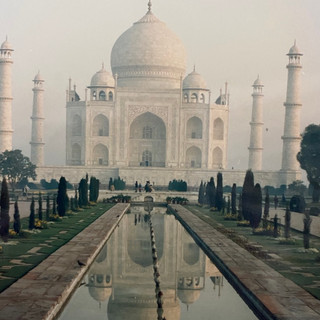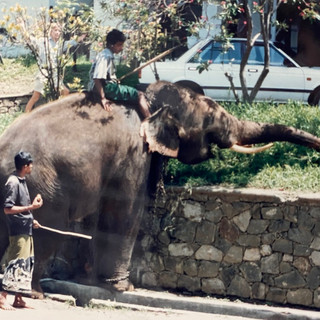India
- Jody Ferguson
- Mar 12, 2020
- 3 min read
Updated: Sep 5, 2020
When Americans think of travel abroad, they think foremost about familiar destinations where many of their friends and neighbors have been, Europe or Mexico, for example. Other, more intrepid travelers may choose to go to South America, Russia, or China. Those with the means and time may choose Africa or Southeast Asia. But rarely do you hear of someone planning a trip to India. They call India (and other parts of South Asia) the ‘sub-continent’ because it is a place and a civilization all its own. It is not Asia; it is not the Middle East. It is its own world.
I traveled to India and the subcontinent in 1992. I had the good fortune of visiting Nepal, India, and Sri Lanka over a three-month period. Suffice it to say, I can never do the country proper justice in a short blog. But I can put down a number of superlatives—good and bad—that can attempt to give the reader an idea of the place. The highlights included the Taj Mahal, Varanasi on the Ganges River, the Ajanta Caves, and Rajasthan. The old traveler’s adage about India says ‘two weeks is too long; two months is not enough time.’ I think what they are trying to say is that India is an assault on the senses. It is beauty pockmarked with poverty, sickness, and death. And I’m not being overly dramatic.
I entered India on a bus from Kathmandu to Delhi (20 grueling hours). Just as we crossed the border we hit and killed a cow. Cows are sacred to Hindus who make up 80% of India’s population. As soon as we recovered from the shock, a hail of rocks and projectiles descended onto the bus, smashing windows. A crowd of angry villagers ran out with batons and broke what windows were left. I and other passengers cowered in the aisles. The quick-thinking bus driver put his foot on the accelerator, and we speed further south, away from the village. One hour later we met a roadblock. There, soldiers took our poor driver off. We waited there another day for another bus to pick us up. As it was full to the brim, many passengers were forced to travel the additional twelve hours on the roof. I sat on the dashboard, my back to the windshield. My introduction to India.

Varanasi is a sacred town on the Ganges River people where pilgrims travel expressly to die. On the river’s edge sit stone steps know as ‘Ghats.’ It is on some of these that cremations take place. We saw contrasts on a daily basis that beggared the mind. One day we took a row out onto the river to see the sunrise and watch the three thousand-year old city waken. Along the way we saw freshwater dolphins and colorful kingfishers. But as we made our way back in, we could smell the odor of funeral pyres. Babies, which aren’t allowed to be cremated, are wrapped and sunk into the river. We saw a pack of dogs fighting over a small corpse that had resurfaced and washed ashore. One day in Varanasi I had to step over a dead man on a crowded street. He wore black, horn-rimmed glasses. Above me electric green parrots flew and sang as they made their way to a nearby nest. Stories like this are legion throughout India, many other similar ones were related to me by other travelers. The Taj Mahal is indescribable. It is like the Great Pyramids or the Grand Canyon. It leaves you with your mouth agape, and truly embodies a much-overused word in the American lexicon: awesome.
In light of our current travel restrictions, I would like to share an interesting perspective of the Taj Mahal I found on Google Arts and Culture: https://artsandculture.google.com/story/zAUxtGbI2DyODQ.
The Ajanta Caves in central India have Buddhist monuments (temples, carvings, painting) that date from the second century B.C. to the fourth century A.D. I attach photos of these marvels. Rajasthan, a desert province in the northwestern part of India is the place where tigers still roam in the wild and where one pictures Tales of 1001 Nights. In fact, many of these these tales were based in Rajasthan, where Mughal and Rajput princes and nobles built impressive palaces, temples, and fortresses.
I could go on and on about India. It is truly its own civilization, but alas 700 words can’t do it proper justice.
















Comments